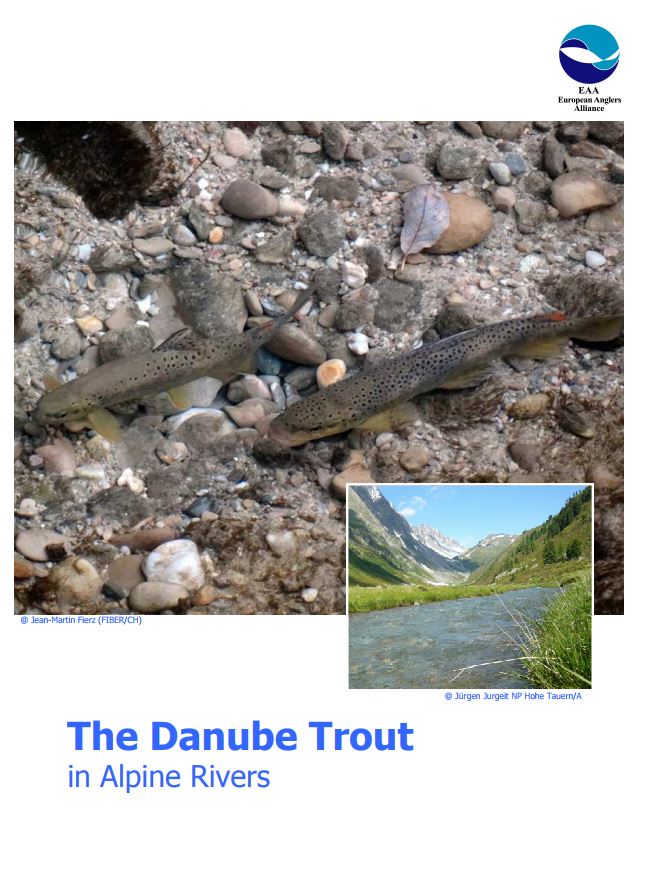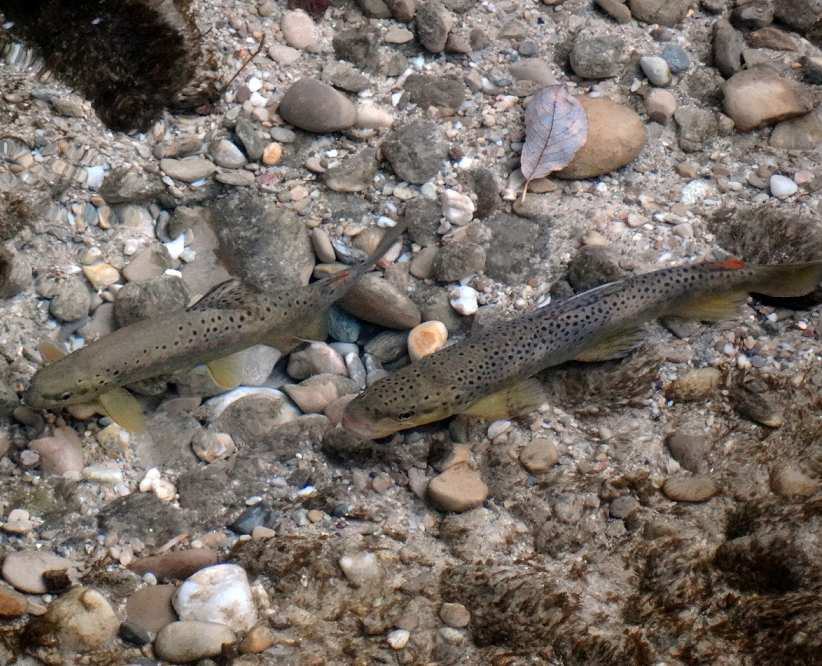EAA position on Danube Trout Conservation Management

The Danube Trout in Alpine Rivers
Brown trout Salmo trutta is one of the most important freshwater fish species in Europe. The Danubian brown trout origin is a special subspecies and can be considered indigenous in the whole Danube-basin.
In many waterways throughout Europe it is also a managed species, subject to the vagaries of local laws and perspectives. Over 10 years ago the project TROUTCONCERT (EU FAIR CH 97-3882) brought research from at least 12 countries together to summarize the scientific evidence on the conservation genetic perspectives of the species (Laikre 1999).
While the scientific evidence, by definition is continuously developing, and many new details on the evolutionary complexity of brown trout have emerged, the essential management recommendations from this report remain valid. Accordingly, “it is insufficient and inappropriate to regard the species brown trout as the basic conservation management unit“. Furthermore, the basic units for management and conservations should be on a local sub-species level. This is the most important and well founded statement, especially considering the varying scientific opinions on the taxonomy and evolutionary significance of brown trout lineages.
While European geneticists are almost unanimous concerning these two conclusions, management practices in some regions remain provincial and misguided. Additionally, EU law concerning the cross-border trade of live brown trout undermines local conservation goals.
An overview of the Austrian section of the Danube and some of the major tributary systems sampled in this study. The Mur River meets the Drau before it reaches the Danube at river kilometre 1367 in Croatia. Small symbols approximate the forward edge of glacial tongues (about 20 000 years BP) according to the 1 : 500 000 map of van Husen (1987).
These problems are especially acute in the Alpine region, where stocking with hatchery reared fishes is done at a very high level. Both eggs und fry of domesticated brown trout strains are freely traded across EU borders and very often used to support stock release programs. There is a large body of literature on the economic inefficiency and ecological inefficacy of these efforts.
In contrast to the more diverse Danubian group of brown trout, Atlantic-basin originated fish in the upper Danube represent a more limited and derived gene pool in the region. The predominant mechanism of introduction has been the release of hatchery-reared fish but some level of natural colonization may have occured in the relatively recent (late to post-Pleistocene) past. Nonetheless, the significant phylogeographic structure of the Danubian clade can still be found in the upper Danube and at least some isolated populations (Blühnbach, Lohnbach, Gossenkollersee and Anrasersee) are dominated or fixed for Danubianclade haplotypes. Continued stocking of allochthonous strains of brown trout will erode the genetic integrity of natural populations in this region.
As introduced fish have been shown to be both economically and ecologically inefficient (Weiss & Schmutz 1999 a,b) we strongly recommend that their use in a sustainable and conservationoriented management strategy in the upper Danube be reconsidered.
What the EAA wants:
The conservation of original and local fishstocks, the Danubian Brown Trout in Alpine Rivers- Stop the stocking of domesticated Atlantic basin strains of brown trout in Danubian and Adriatic basin waters of the Alpine region where local strains are found.
- Adopt best management practises, in full concordance with the EU TROUTCONCERT recommendations:
- Limit the use and transfer of hatchery fish to the smallest watershed region possible, most preferably, the same river.
- Where regional strains are developed their use should be limited to waters where there is a demonstrated need due to a lack of recruitment of overall ecological potential, and
- Genetic characterization should support that the heritage of the hatchery strain is the same as the wild stocks, to the best degree possible by using local brood stocks.
For example, an Abstract concerning the distribution of the autochthonous brown trout in Carinthia/Austria:
by Wolfgang HONSIG-ERLENBURG & Klaus KUGI
The Danube-basin originated brown trout can be considered as autochthonous in Carinthia.
Stocking, especially since the second half of the 20th century has resulted in cross breeding and as a consequence there are few indigenous populations remaining, that are genetically pure descendents of the Danube sub-species.
A project, commissioned by the Naturschutzbund of Carinthia, the Provincial Government, the Natural Scientific Society of Carinthia and the Univ. Graz (Dr. Steven Weiss) investigated the mitochondrial DNA of 10 brown trout populations. The investigated fish were chosen from brooks, where no stocking was known and where by the existence of natural or anthropogenic disruptions of the longitudinal river continuum fish cannot migrate upstream from lower regions.
Results:
One single population of brown trout was found in a brook within the “Unteres Gailtal” that contains to 100 % genetic material of the Danube sub-species (Da-9). The Naturschutzbund of Carinthia has leased this brook in order to conserve the genetic pool of the fish.
For notes and references please download the position paper
Downloads:
